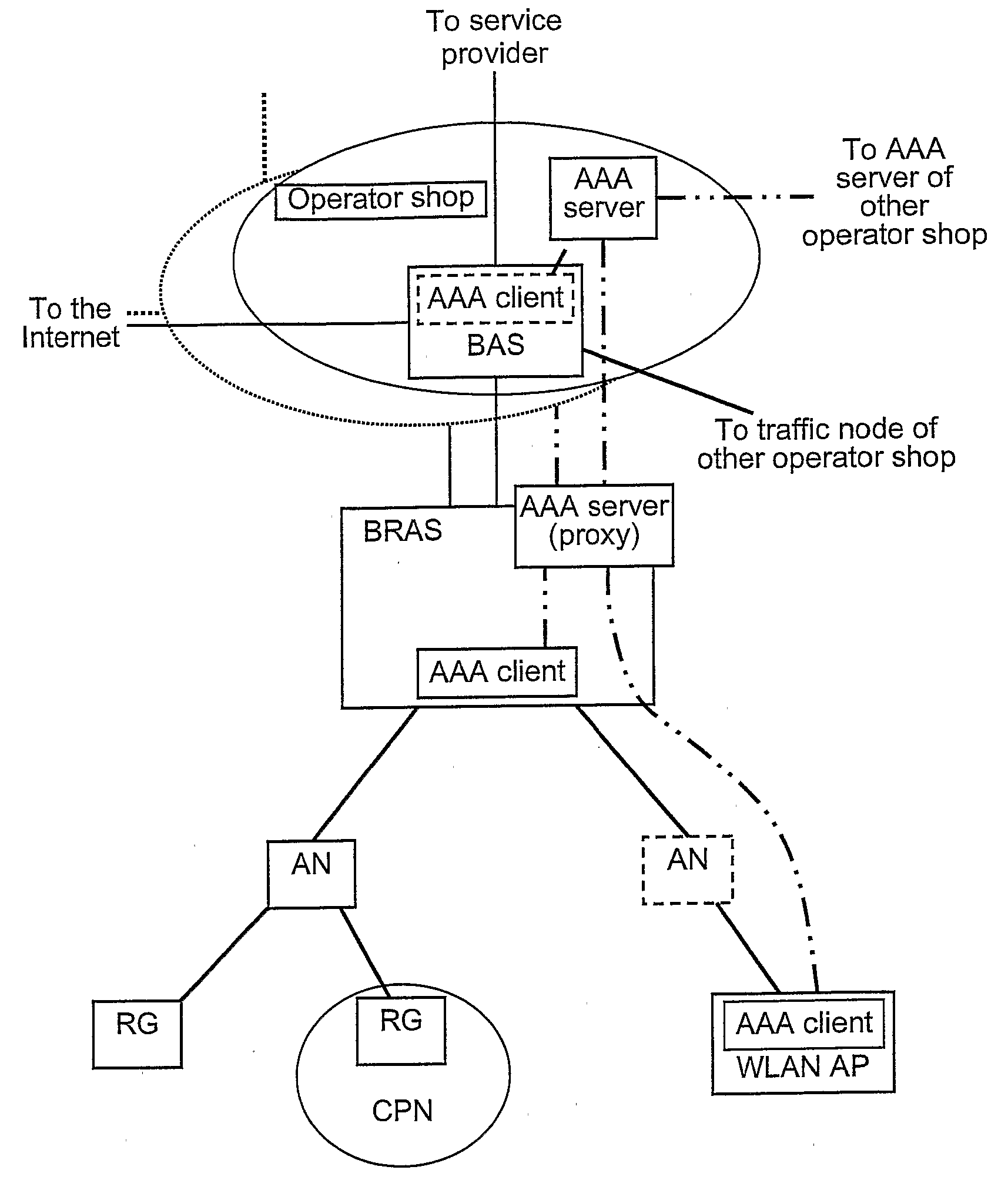Operator Shop Selection
a technology for operators and shops, applied in the field of operator shops, can solve problems such as more collisions, interference with signals, and collisions, and achieve the effects of reducing the number of collisions
- Summary
- Abstract
- Description
- Claims
- Application Information
AI Technical Summary
Benefits of technology
Problems solved by technology
Method used
Image
Examples
Embodiment Construction
[0086]A system and method including procedures for operator shop selection that includes both layer 2 mechanisms and layer 3 mechanisms will now be described.
[0087]Overview of the Target Broadband Access Network Architecture
[0088]The network environment includes a broadband access network designed to serve roaming users, including both end users who roam within the broadband access network and end users who roam between the broadband access network and other access networks.
[0089]Roaming utilizing the AAA infrastructure is based on individual user identities in the form of network access identifiers (NAIs). The preferred authentication mechanism, that is also required for some parts of the system, is the extensible authentication protocol (EAP), see L. Blunk, J. Vollbrecht: “PPP Extensible Authentication Protocol (EAP)”, RFC 2284, March 1998, and L. Blunk et al.: “Extensible Authentication Protocol (EAP)”, of the EAP Working Group, IETF, and the carrier for EAP is assumed to be des...
PUM
 Login to View More
Login to View More Abstract
Description
Claims
Application Information
 Login to View More
Login to View More - R&D
- Intellectual Property
- Life Sciences
- Materials
- Tech Scout
- Unparalleled Data Quality
- Higher Quality Content
- 60% Fewer Hallucinations
Browse by: Latest US Patents, China's latest patents, Technical Efficacy Thesaurus, Application Domain, Technology Topic, Popular Technical Reports.
© 2025 PatSnap. All rights reserved.Legal|Privacy policy|Modern Slavery Act Transparency Statement|Sitemap|About US| Contact US: help@patsnap.com



